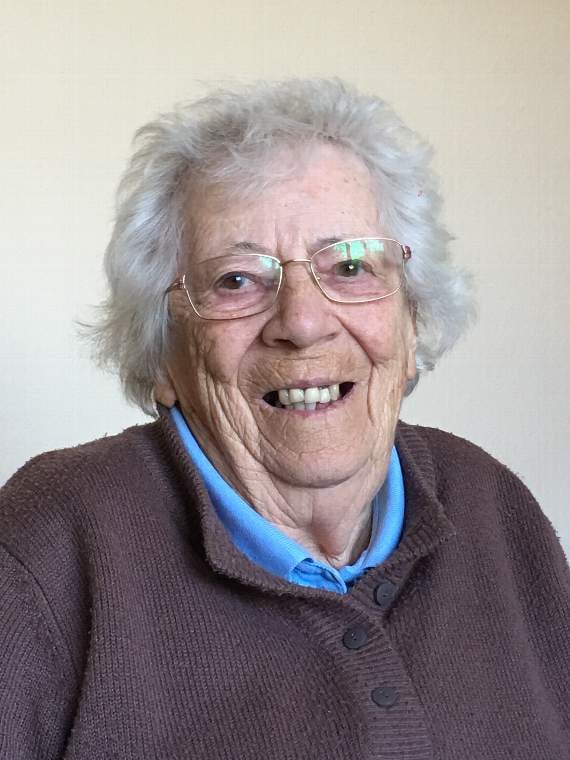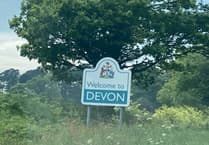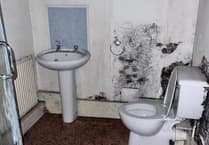Following on from our coverage of the Exercise Tiger commemorations readers have contacted us to share other memories of WWII in the South Hams.
George Beable, a retired farmer from Wrangaton, told us: "Shortly before D Day a major ’invasion’ exercise was carried out into the South Hams and my father, who was farming near Ugborough, found the roads jammed with army vehicles and Sherman tanks in the fields."
"Each morning my father would cycle to a field adjacent to Kitterford Cross (on the 3121, near the A38, just below Wrangaton) to check his cattle and on the morning of this exercise he found his way barred by a GI on sentry duty on the crossroad.
"He trained his gun on my father and told him in no uncertain terms that he had orders that no one should pass through the junction and that he would shoot my father if he attempted to do so.
"My father protested but he could not get the GI to allow him access to the field . Eventually Dad changed his approach and offered to bring him a dozen eggs the following morning if he would let him through. The gun was immediately lowered and a broad smile spread across the soldier’s face!
"True to his word my father took the eggs up to the crossroads the next day but the GI was no longer there. He would often wonder if this particular soldier survived D Day."
The war started relatively quietly in the South Hams. A few men joined up and others were conscripted. Some soldiers and airmen were billetted around the villages.
Pam Wills of Strete remembers two RAF men being billeted in her house: "They used to spoil me. We would play cards for money and they’d let me win."
"Then the Durham Light Infantry arrived and put the barbed wire up on the beaches. And we had two machine gun posts and a bofurs gun guarding the coast. One of the men used to escort me home from school because I reminded him of his little sister."
The odd gap was left in the wire so people could continue to enjoy the beach.
Plymouth was badly bombed, and people remember going to various high points like the cliffs at South Milton, to watch the explosions and the fires.
A few bombs were dropped over the South Hams by departing German bombers and, over time, many of the communiteies in the area had been attacked by small raids of fighter bombers, even at times straffing workers in the fields. Kingsbridge, Aveton Gifford, Salcombe and Dartmouth were amongst the towns and villages where there were fatalities.
As a result of the bombing campaign against the cities a good number of evacuees were also re-settled here and, in places, school numbers swelled dramatically. .
A big change came in 1943 when over one million American GI’s moved on to the south coast.
Tented encampments blossomed all across the county. One huge camp was in West Allington Woods where locals remember their mothers taking in washing for the American soldiers and where, like so many other places around the South Hams, soldiers carved their names in the bark of trees, graffitti which can still be found today.
There were other camps around Ivybridge where the 116th Regimenet (The Bedford Boys) arrived in force.
All around George Beable’s home near Ugborough the fields duly filled with camps, fuel and ammunition dumps and the like.
There was a good deal of amiable fraternisation. The GI’s were a great supply of sweets and cigarettes.
George told us of the sister of a man who worked on their farm. She met a GI at the Kingsbridge Road Hotel, latterly the Coaching House, near Wrangaton. One thing led to another and they married.
George also recalls that a Sherman tank entirely demolished a cottage at Fowlescombe, on the road to California Cross (Named for the GI’s?).
Perhaps the most significant wartime event in the South Hams was when Devon County Council were ordered to requisition 30,000 acres in the quadrangle Torcross - Strete - East Allington - Blackawton. The similarity between Slapton and Utah Beach made it an ideal location for trial runs to be engaged in by the troops who would be making the landings in Normandy.
The 3,000 residents who lived within that area were given 6 weeks to leave. They were helped to move by British and American troops and the Women’s Royal Voluntary Service (WRVS).
Pam told us: "Father moved all his stuff down to Beesands and I was the last child in the village. I was wandering around when these army chaps were filming. They got me to pretend to go in and out of buildings, and to watch people packing up."
Later Pam learned that the film was being sent to America "to show what we were doing for them."
Then the exercises happened, with live firing, shelling and bombing and many buildings were destroyed.
After the exercises came the real invasion and, as if by magic, almost overnight, the camps in the fields and woods emptied, and suddenly the men were gone.
After nearly a year away Pam and her family were finally allowed to return to Strete. Though some families never went back. "It was a bit eerie, all overgrown. The forge and reading room (next door) were blown to bits. Destroyed by shelling. It was all thatched and just burned."
And the romance in Wrangaton? Well, the girl had a little boy in May, but her GI husband was already posted away prparing for the invasion. He died on the beach at Omaha, having never seen his baby son.
George remembered that the boy was the object of some jealousy however, as his American grandparents would send him parcels containing such things as "T shirts". Nobody had ever seen a T shirt.





Comments
This article has no comments yet. Be the first to leave a comment.